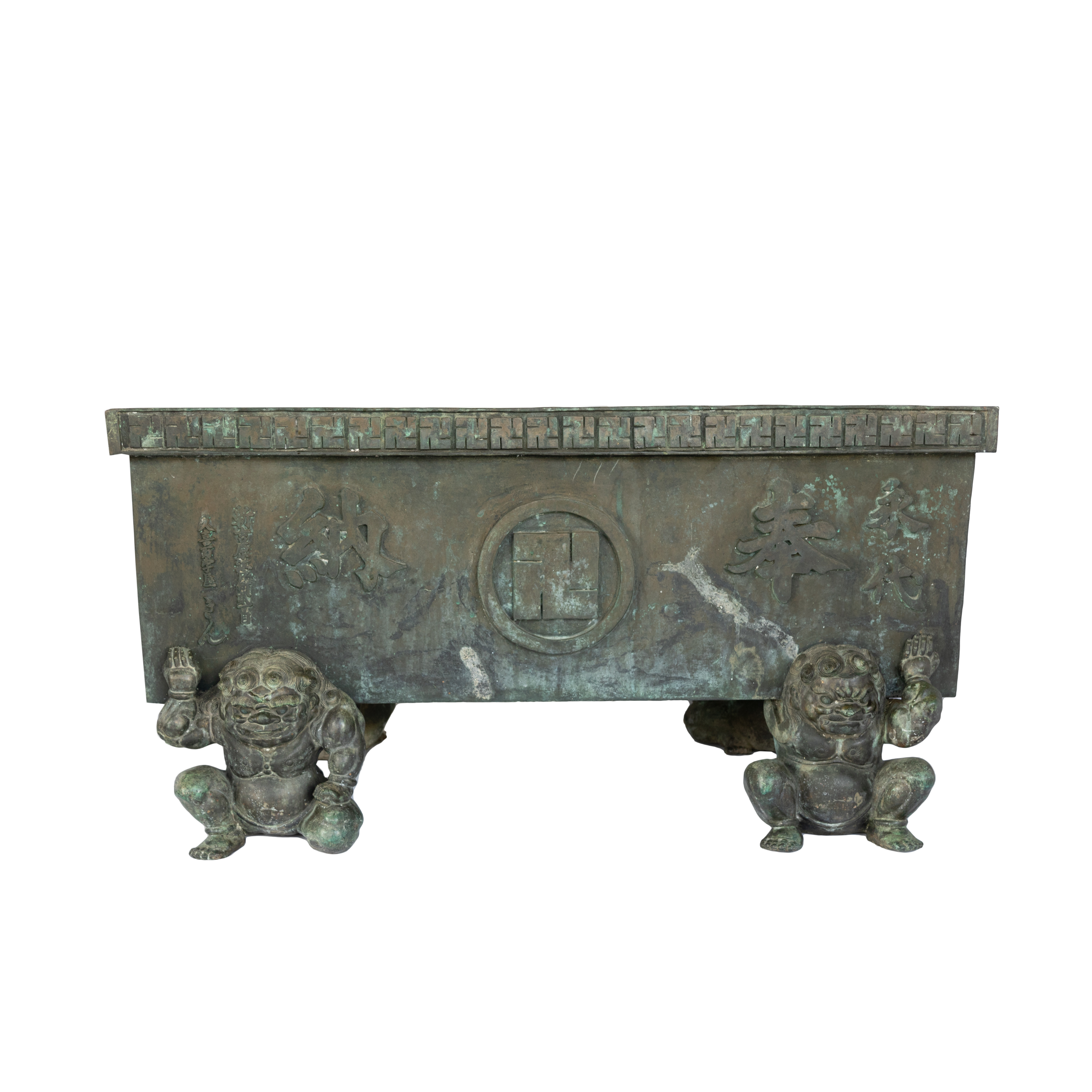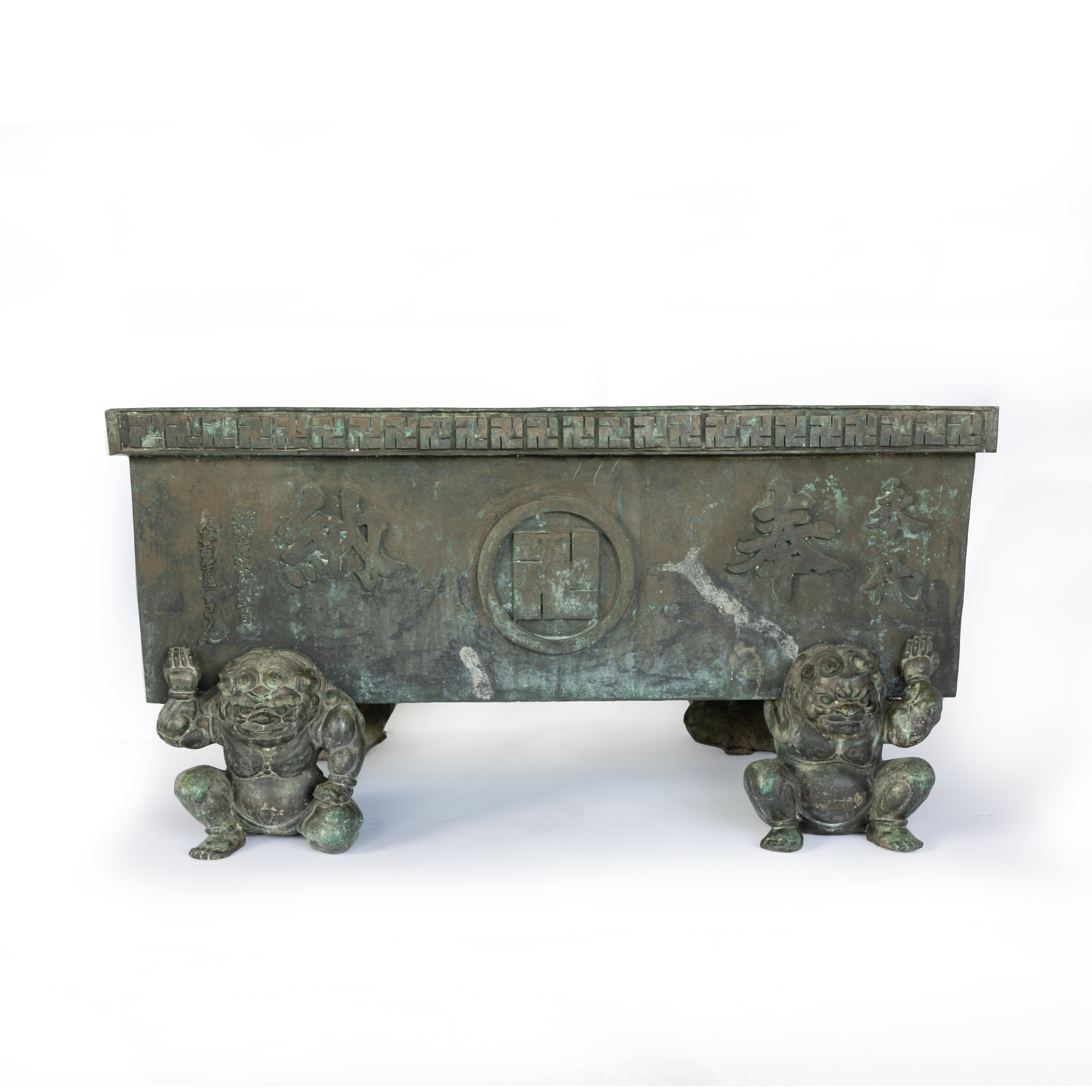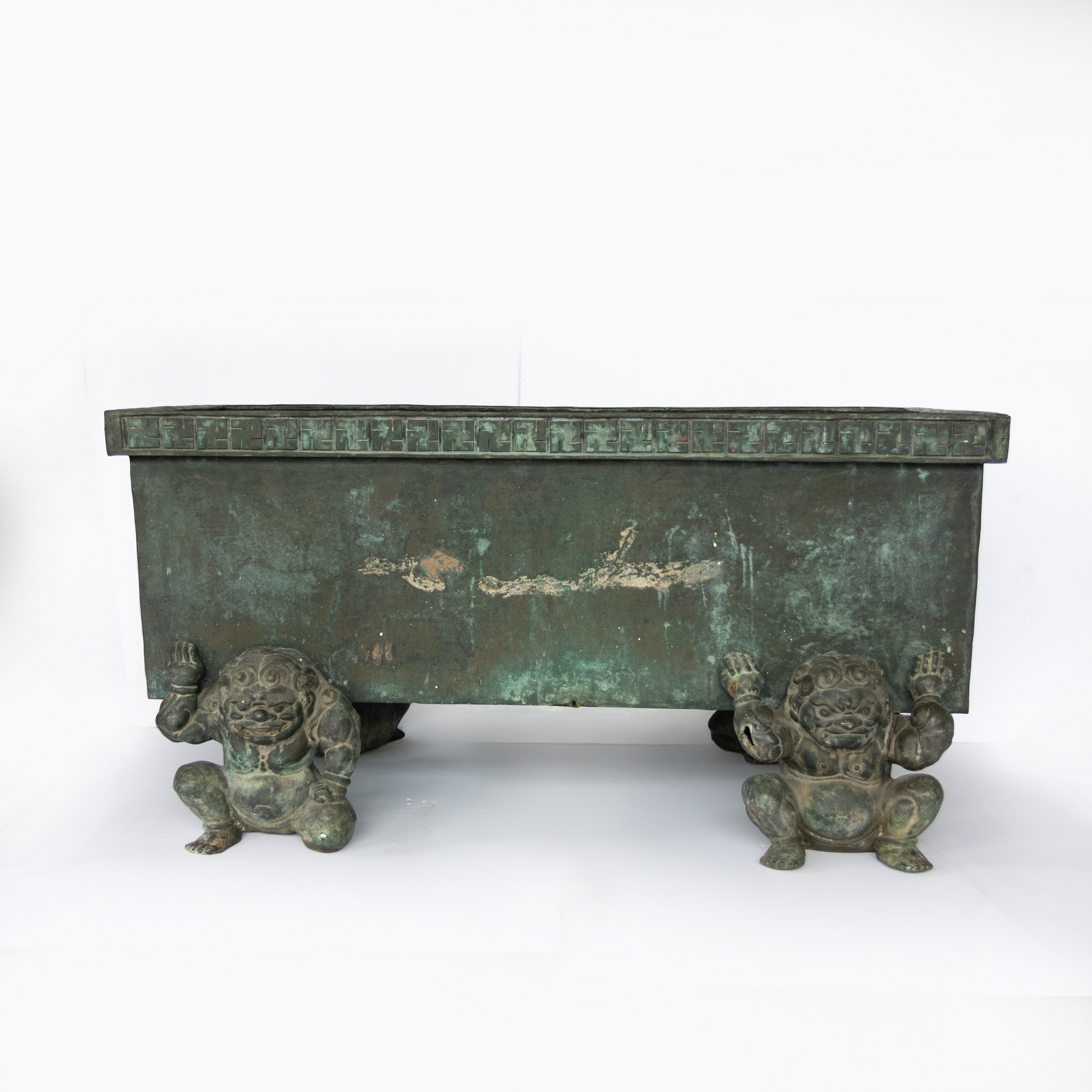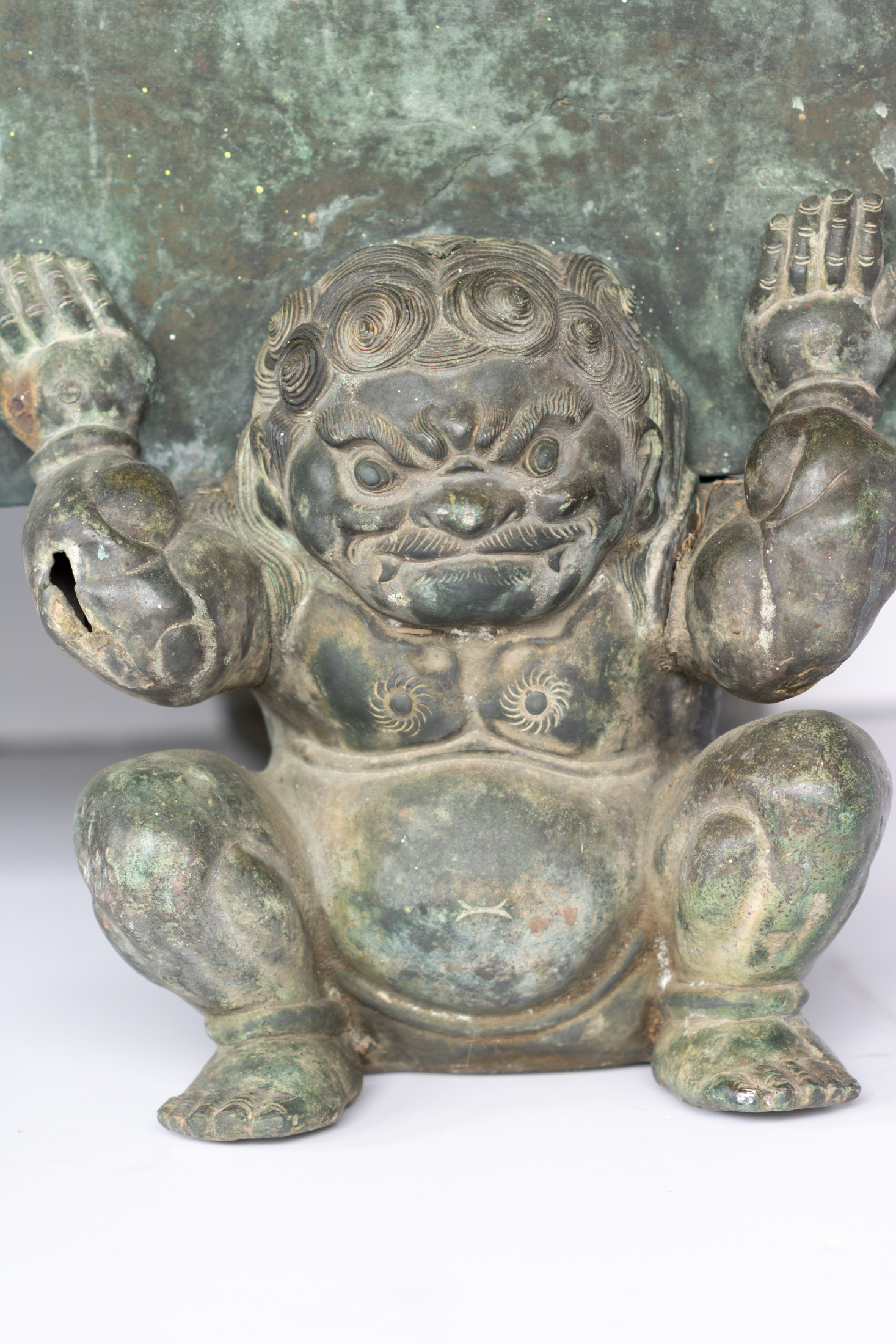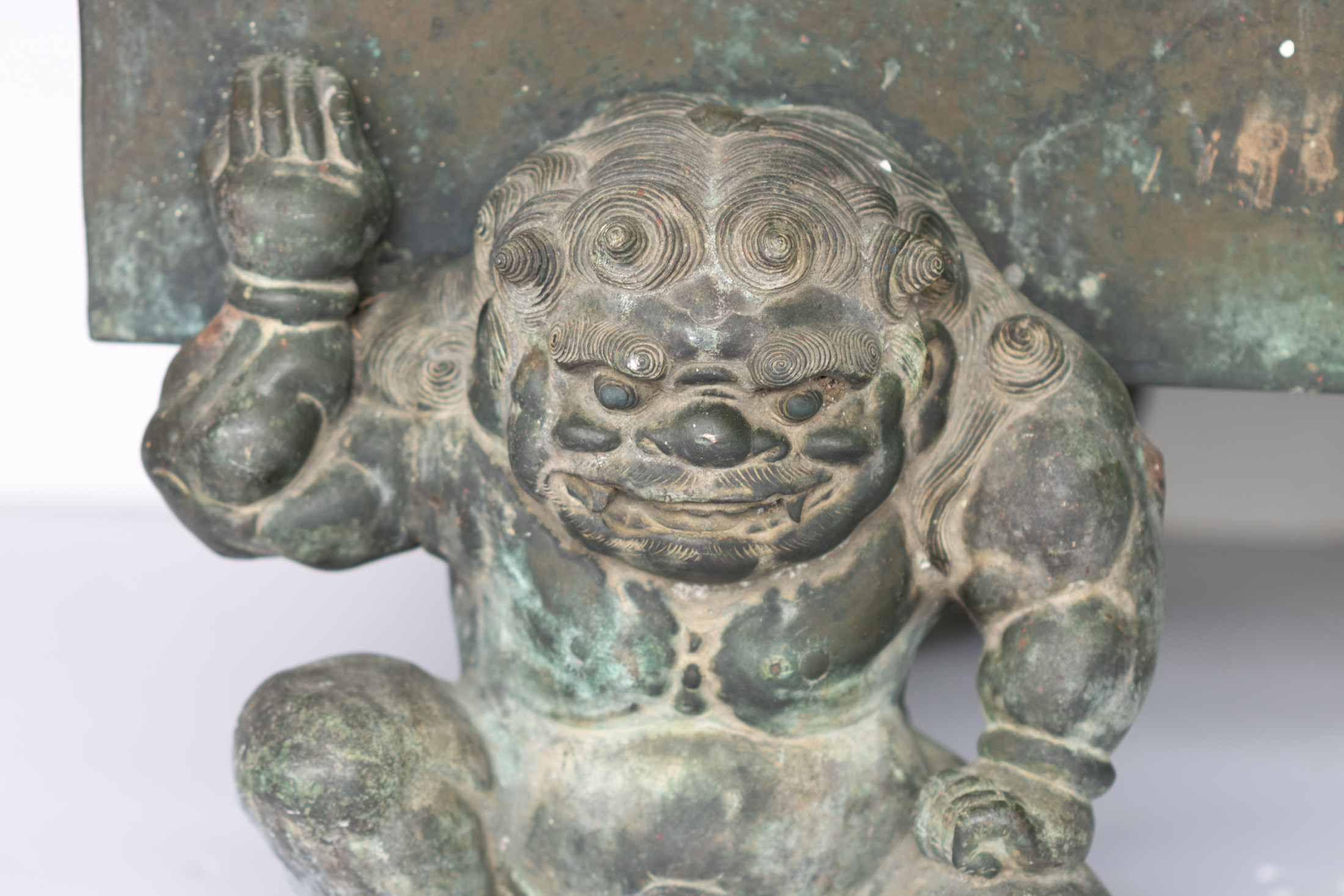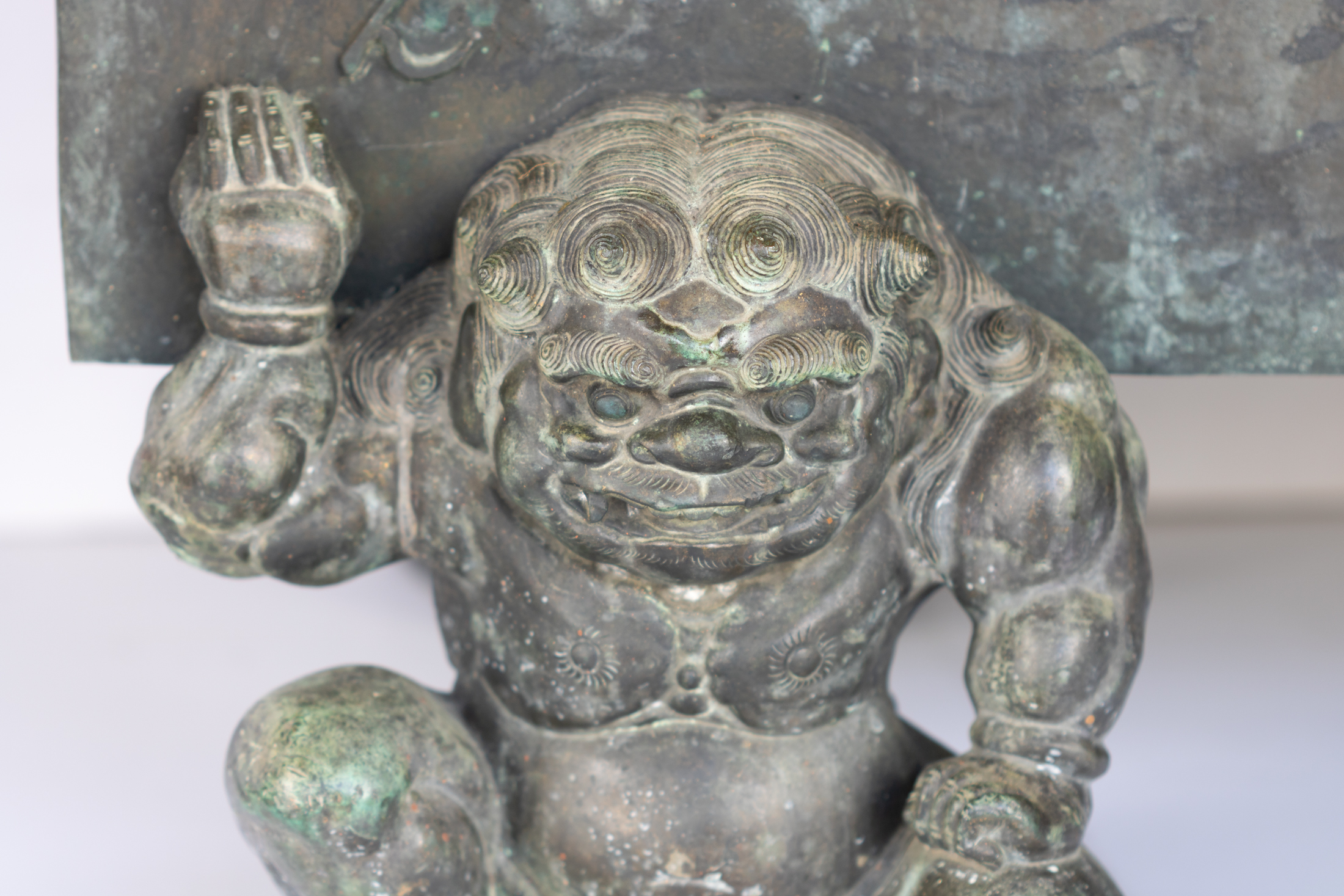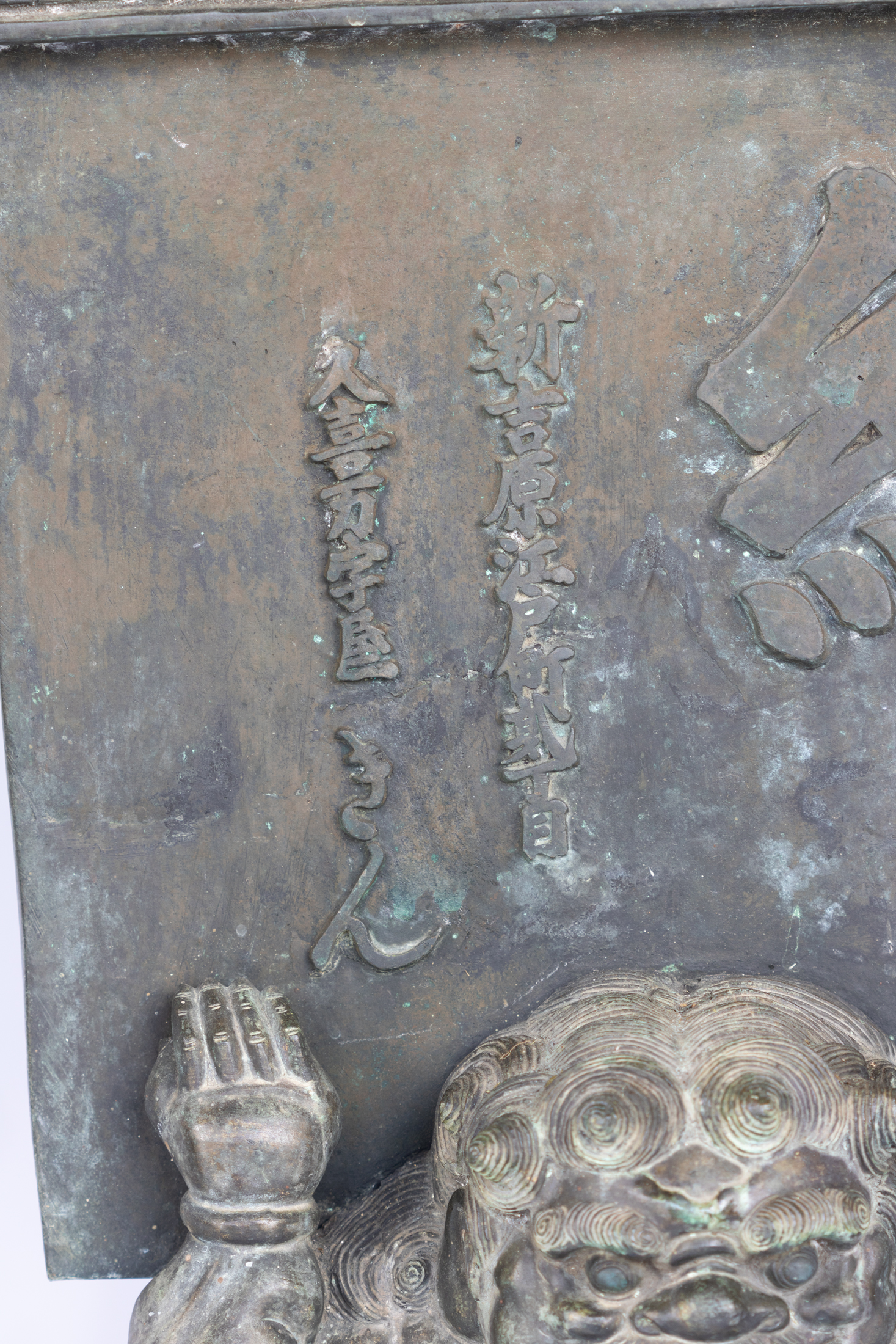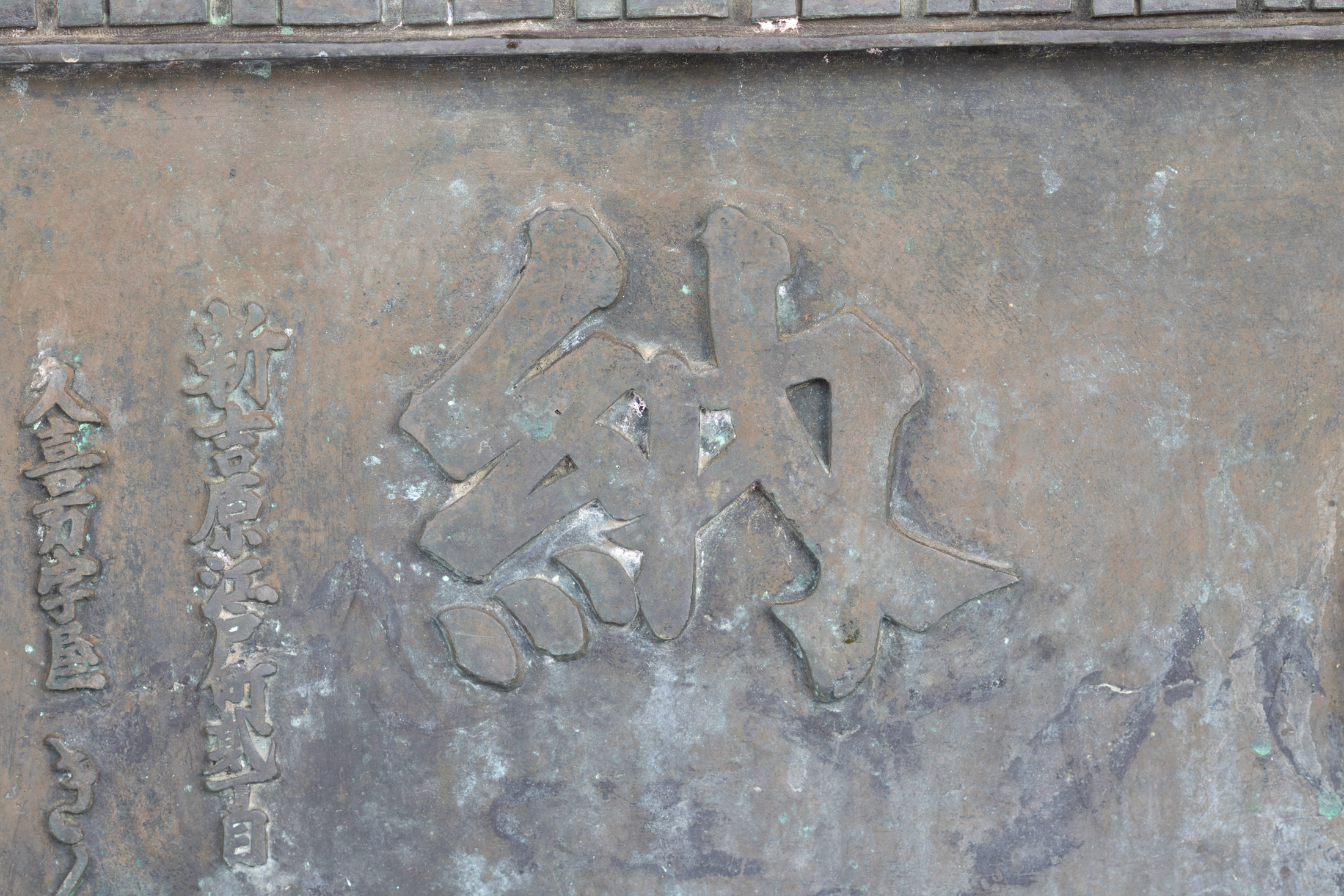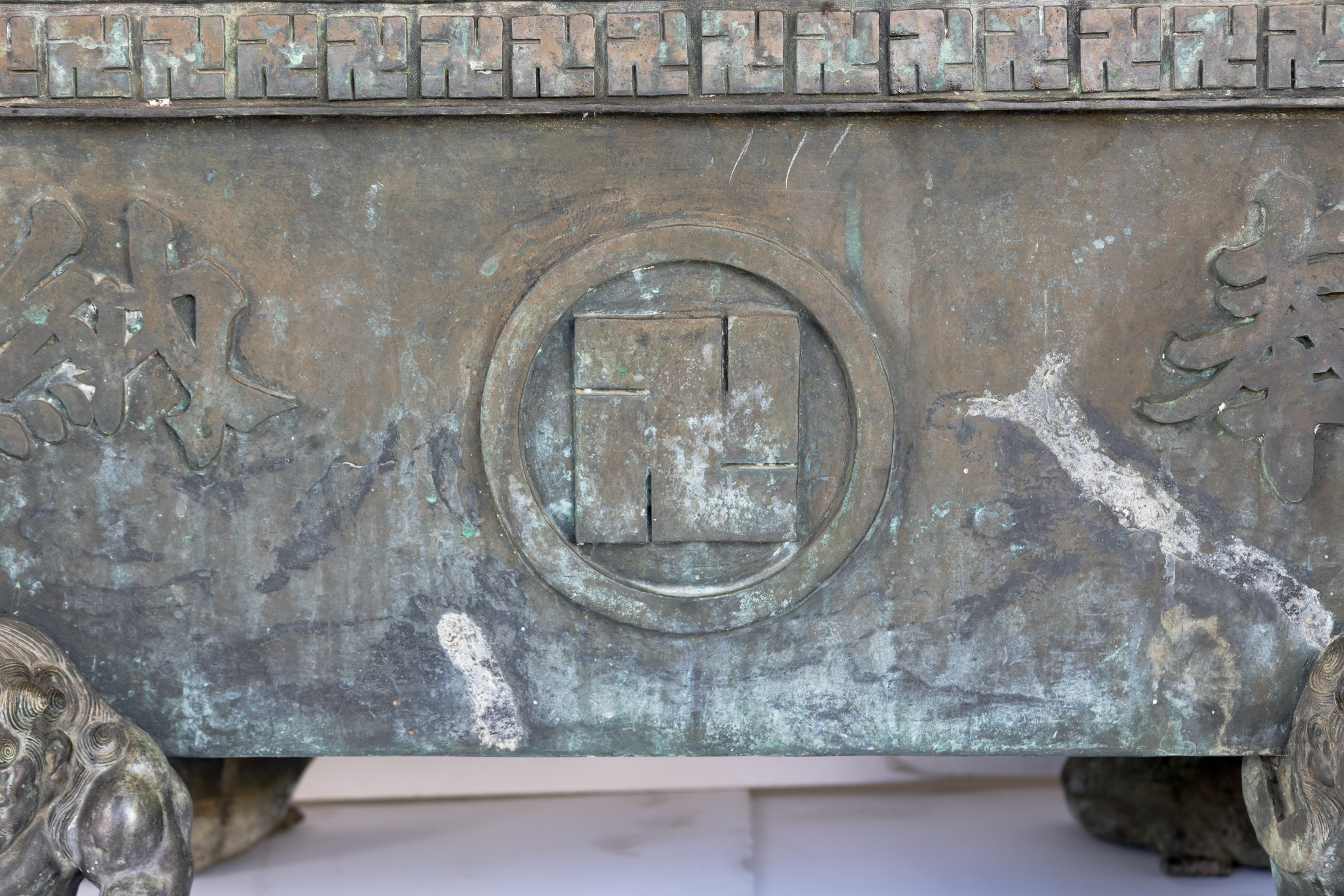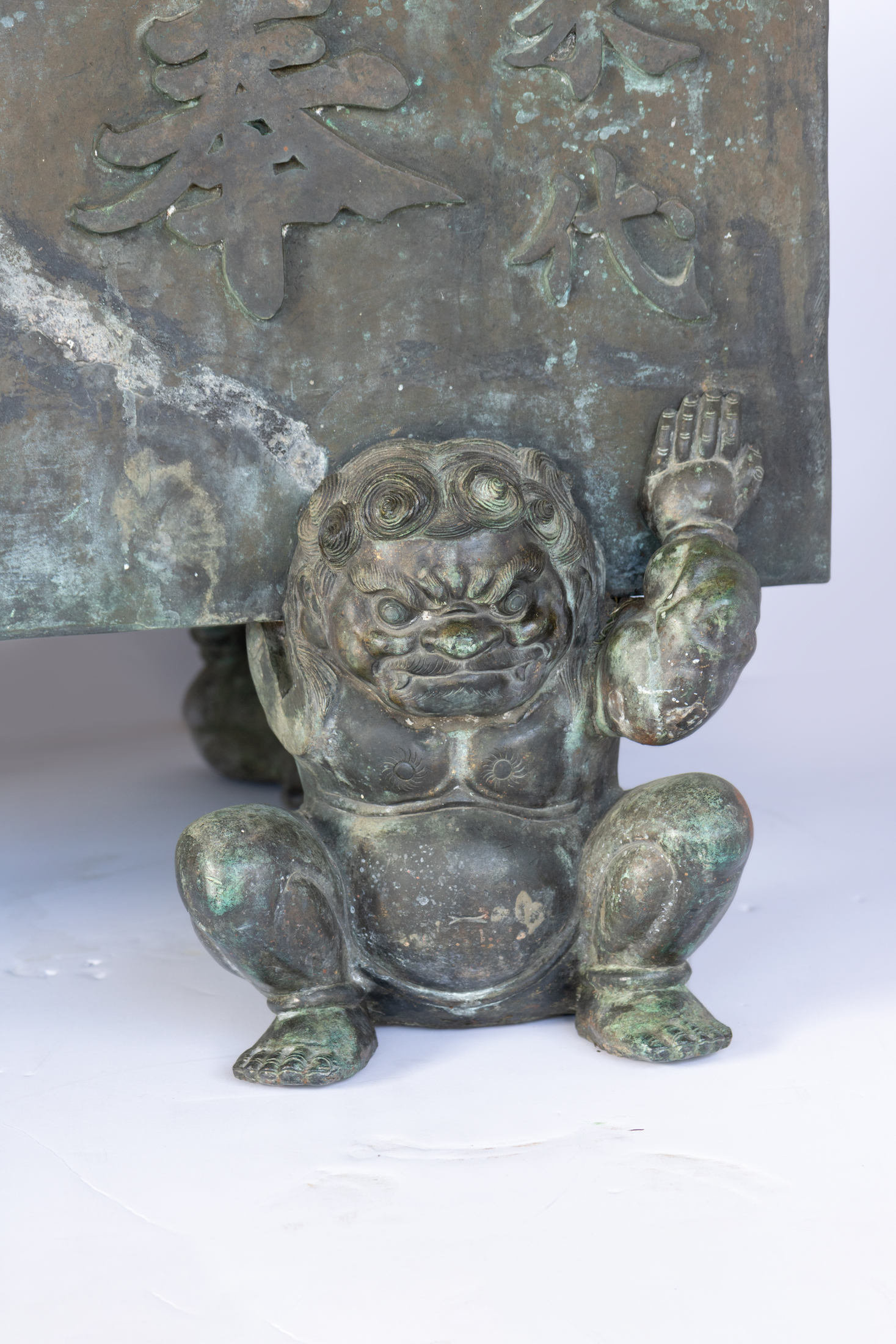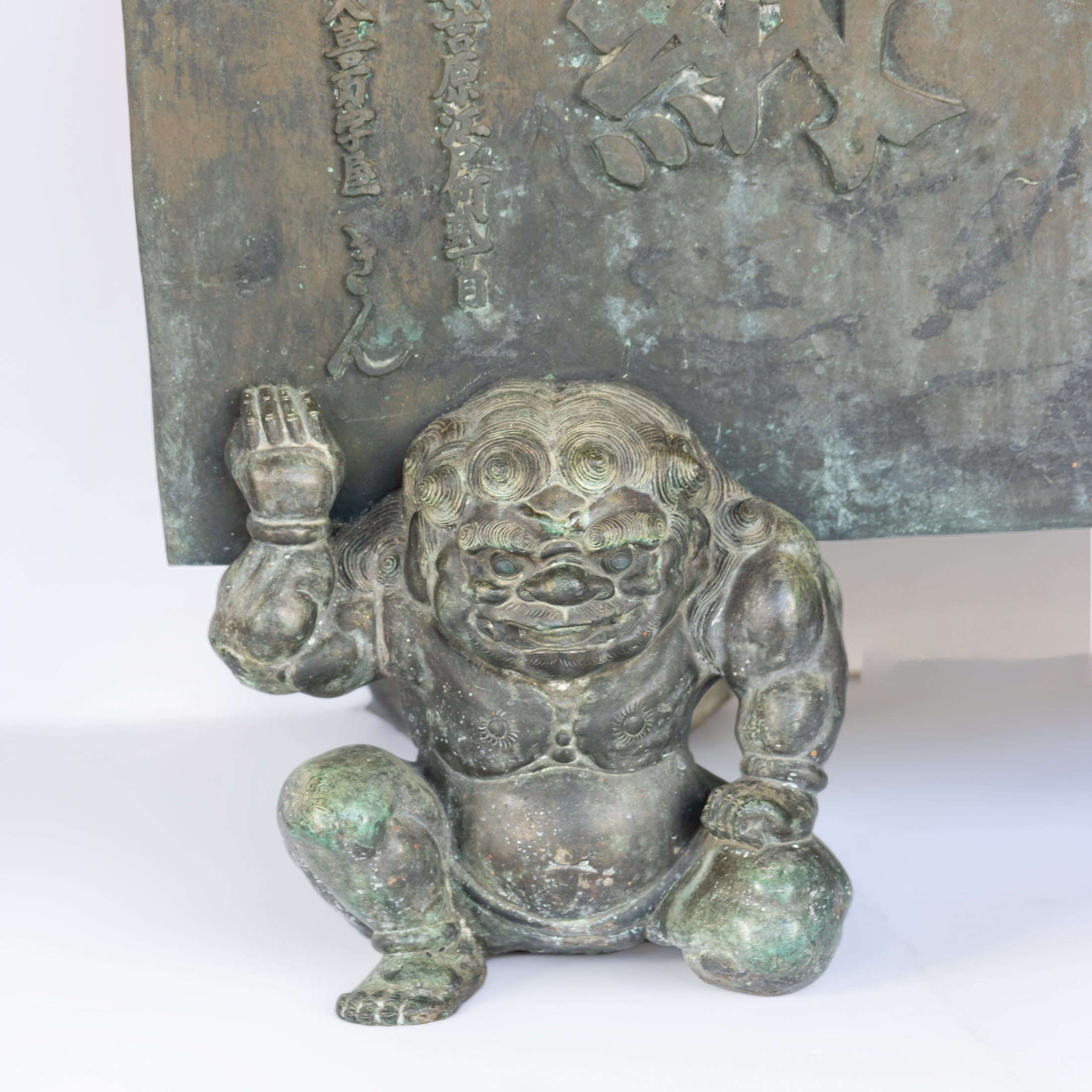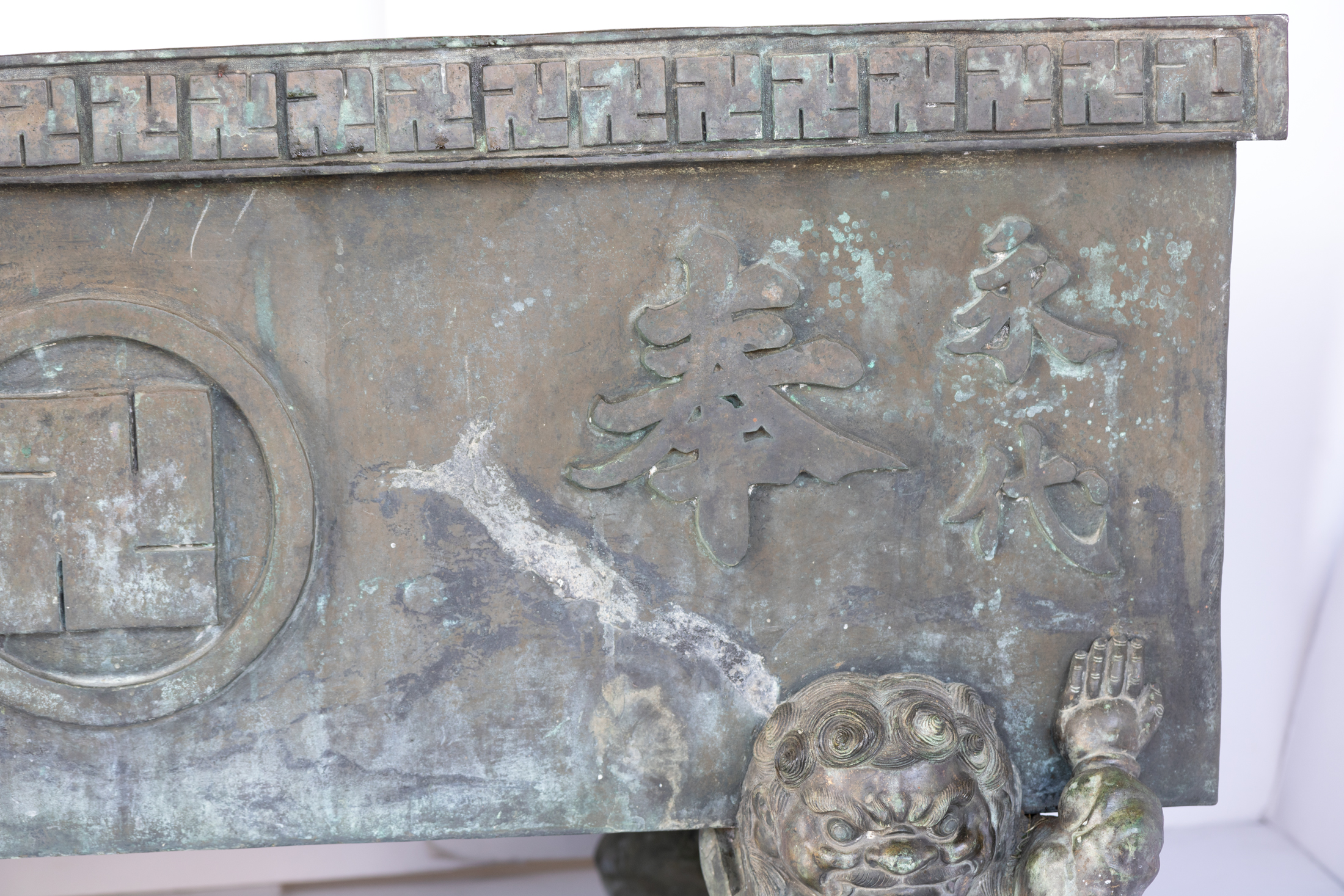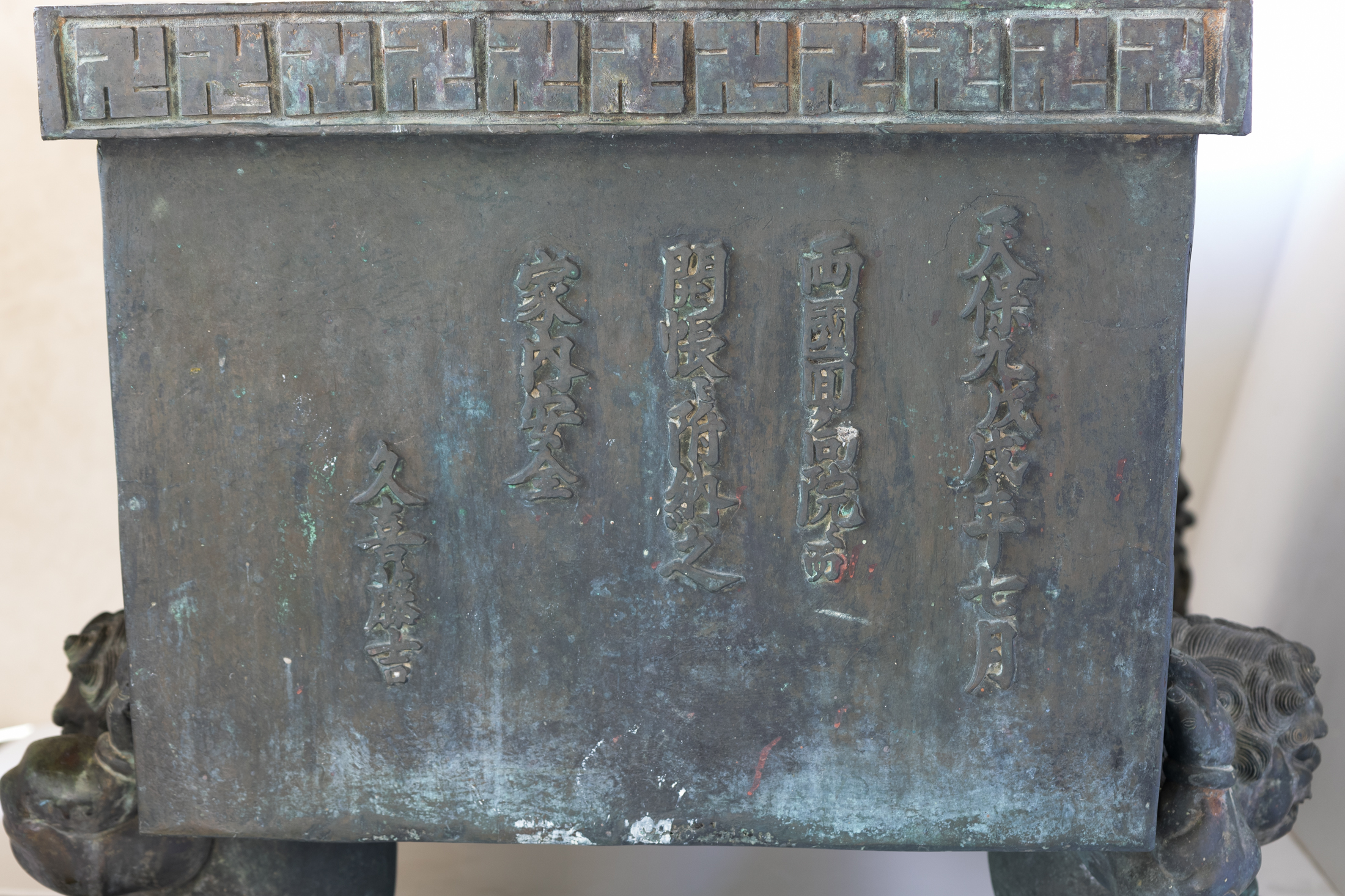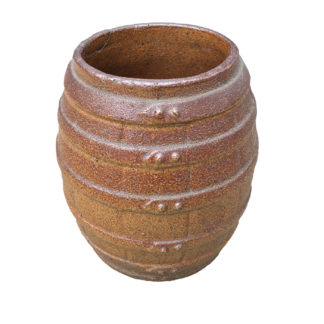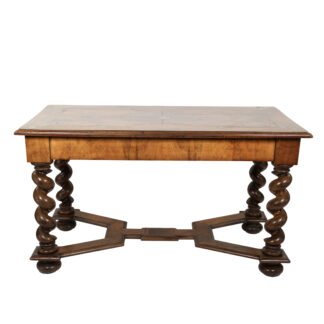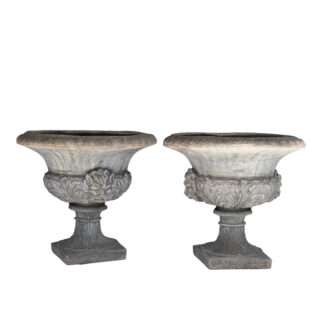Description
A very large scale bronze censor from the House of Pleasure Kukimanji, on the Second Block of Edocho in Shin Yoshiwara District, .
Supported by four bronze Oni. 1 2 3 Japan, 2nd Quarter 19th Century
height: 23 in. 58.5 cm., width: 45 in. 114 cm., depth: 26 in. 66cm.
From the estate of Former U.S. Secretary of State, George Shultz 4 and his wife, socialite and philanthropist, Charlotte Mailliard Shultz 5
Further readings and sources:
- In popular Japanese thought, the word “oni” conjures up images of hideous creatures emerging from hell’s abyss to terrify wicked mortals. Some scholars assert that the concept of the Japanese oni is a purely Buddhist creation, while others argue that it is not exclusive to the Buddhist cosmos. The visual image of oni is predominantly masculine—with muscular body and loin cloth—there are numerous examples of female oni in Japanese lore such as Yomotsu-shikome (literally ugly woman of the other world)
A contemporary oni in these media is often portrayed as a creature from a different time and space whose existence has become entwined with cutting edge technology such as electronics, mechanics, or robotics. Geopolitics may change; but the oni is still an alienated “other.”
When occasionally oni are welcomed as bringers of prosperity, they are still expected to leave soon after giving the fortune and/or blessing.
What was once awesome and terrifying became an entertainment and commodity in urban areas. In the present age, people now enjoy oni as entertainment, frightening but not threatening to their daily lives. Through the hands of artists, writers, and commercial interests, oni have survived and transformed into more humanlike and commercially profitable entities. Currently, one can find a wide array of oni in the popular media—from the gentle and cute to the sexual and grotesque. The oni’s transformation is highly reflective of and inextricably intertwined with Japan’s own history and societal change. Still the oni’s cannibalism, powers of transformation, enmity towards a central authority, isolation, ostracization because of different customs, ability to emit lightning, as well as their positive attributes (as sources of treasure or bringers of wealth) remain ever-present as the beings’ major features. Some aspects of oni may be more emphasized than others to facilitate their use as art objects or political weapons, but whatever they mean, the oni have been an important part of the Japanese psyche for well over a thousand years.
Japanese Demon Lore: Oni from Ancient Times to the Present by Noriko T. Reider © 2010 Published by University Press of Colorado, Utah State University Press https://www.amazon.com/Japanese-Demon-Lore-Ancient-Present/dp/0874219485 ↩
- The Japan Oni Cultural Museum , Kyoto by the Sea, is appropriately located at the foot of the Oeyama mountain range, home to the most notorious “oni” (demon or ogre) in Japan, Shuten Doji. The museum explains local folklore and has displays of both national and international oni masks and artifacts. https://www.kyototourism.org/en/sightseeing/539/ ↩
- The Oni Museum Of Kitakami
Japanese name: Oni no Yakata (鬼の館) https://www.iwate-ilc.jp/eng/ktimes/the-oni-museum-of-kitakami/ Google Maps https://goo.gl/maps/GnJmpaACniQ2 ↩ - George Shultz, statesman and Stanford scholar, dies at 100, Stanford News, February 7, 2021 https://news.stanford.edu/2021/02/07/george-shultz-statesman-stanford-scholar-dies-100/ ↩
- Charlotte Shultz, who received a queen, a pope and countless world leaders to S.F. as its ‘chief of protocol,’ dies at 88 by Carolyne Zinko, San Francisco Chronicle, Dec. 3, 2021, https://www.sfchronicle.com/bayarea/article/Charlotte-Shultz-San-Francisco-s-longtime-16672961.php ↩

